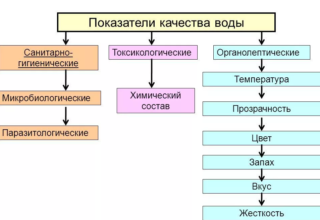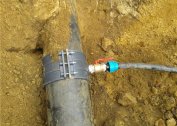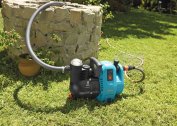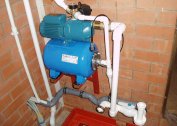A filter for the purification of river water is necessary where there is a surface intake from a natural source. The filtering device eliminates suspensions, significantly improves organoleptic characteristics and safety of use. At the same time, various filtration methods are used in water treatment plants depending on the purpose of the liquid.
Application area
If water is taken from a natural source, the fluid needs to be cleaned. The important question is to what extent river water should be purified. For domestic and technical needs, irrigation of garden plantings, it is enough to install a mechanical rough filter, which will remove the suspension.
To obtain water suitable for drinking and cooking, fine-cleaning devices, for example, with charcoal filters, as well as with a softening and disinfecting effect, will be required.
Softeners will be needed for a bath or pool, if the source is saturated with hardness salts. The use of hard water even after mechanical cleaning can adversely affect the condition of the skin and hair of a person.
When using rivers and lakes to supply water to industrial facilities, filter structures are also installed. These can be simple mechanical devices, if water supply is, for example, for construction, and complex complexes for industries where a high degree of purification is required. The latter include the pharmaceutical, cosmetic and food industries.
Types and principle of operation of filters
The action of installations for filtering river water is aimed at the following operations:
- Pre-cleaning, which involves the removal of coarse suspensions. For this, mechanical strainers are usually used. The diameter of the retarded fractions also depends on the size of the cell. But sometimes gravel options are also used. Thanks to this cleaning, equipment wear is reduced, including for fine cleaning of the liquid.
- Adsorption with the elimination of harmful substances, as well as the specific taste and smell of water from natural sources. Activated carbon is considered the best sorbent due to the presence of micropores. He falls asleep in special cartridges that change periodically. Used for adsorption and membrane type filters.
- Softening with the removal of hardness salts, glandular compounds. Iron removers and softeners can work using chemical reagents or by the principle of oxidation of metal suspensions, which precipitate and are retained by the filter. In addition to the health benefits, devices are needed to save household partings from scale and rust.
- Antibacterial cleansing to get rid of pathogenic microorganisms. More commonly used are ultraviolet devices that are easy to maintain and safe for health. Under the influence of UV radiation, most of the harmful bacteria, protozoa and even viruses die.
For simultaneous purification from harmful impurities and softening using ion-exchange devices. They are divided into hydrogen and sodium. In both cases, heavy metals and radioactive substances, passing through the filtration apparatus, are transformed into neutral compounds.
The maximum purification will be provided by reverse osmosis columns, which are equipped with special membranes that allow only water molecules to pass through. However, the liquid at the outlet is close to distilled; for drinking it must be enriched with valuable trace elements.
Criterias of choice
 When choosing filtration devices, their purpose is taken into account. For a summer residence, on which they rest only on the weekend, a mini-filter in the form of a nozzle on the mixer spout is enough. It delays part of the suspension and harmful substances. The same device can be used in residential conditions, because already purified water enters the taps.
When choosing filtration devices, their purpose is taken into account. For a summer residence, on which they rest only on the weekend, a mini-filter in the form of a nozzle on the mixer spout is enough. It delays part of the suspension and harmful substances. The same device can be used in residential conditions, because already purified water enters the taps.
If the garden house is not equipped with water supply, it is worth choosing the “camp” option - a filter that works without pressure. Usually they are presented in the form of jugs with a carbon cartridge. Water flows down to the bottom of the tank and becomes cleaner due to the fact that the micropores of the filtering material hold up harmful substances as well.
If the filtering device is selected for a house with permanent residence, which is fed from an open source, it is advisable to create a comprehensive system. Its main elements:
- coarse cleaning device to eliminate mechanical impurities;
- ultraviolet sterilizer;
- activated carbon filter apparatus for absorbing bad odor and taste, removing color and organic compounds;
- main electromagnetic softener;
- fine sand filter.
The number of filter elements depends on the individual water performance. Only rough cleaning will be required.
Before buying filtering devices, it is important to do a laboratory analysis of the incoming water in order to clearly determine which harmful components need to be disposed of.




